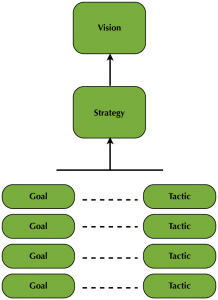Last week, I saw an open letter published on Huffington Post from a website I used to write for addressed to Facebook.
Facebook had, without warning or announcement, completely shut down their business page. And this company’s entire business model is predicated on driving traffic from Facebook (and other sources) to their website. More often than not, they paid for the privilege of reaching their fans and followers with their content.
And then one day, Facebook pulled the rug out from under them and said, “Nope.”
All the posts on their page disappeared. Fans trying to independently share their content on Facebook were told it was “inappropriate.” In short, they were almost completely blocked from sharing on Facebook’s stage.
(I don’t know the end of this story as to why they got shut down or what happens next, but it remains a cautionary tale!)
Here’re the sad facts:
- It’s not 2005 any more.
- Very few people are going to “just find” your blog via Google (without a serious SEO strategy).
- Your “organic reach” on Facebook is laughable, and Twitter, Pinterest, and Instagram are all set to follow in the big FB’s footsteps. Plus, any one of them could take away your audience at any time.
- Leads and opt-ins from guest posts are WAAAAAY down (and too much guest posting, 2005-style, can even get you penalized by Google).
Frankly, the strategies we all used to use to promote our blogs are becoming woefully out of date.
If you’re still relying on organic search or social traffic to promote your blog posts, you are behind the times. And your traffic probably shows it.
But what’s the alternative? How do you efficiently and effectively drive traffic to your blog in 2016?
It’s all about borrowing a stage.
No matter what kind of promotional strategies you adopt, you are, in essence, borrowing someone else’s stage in order to reach their audience.
That could be a literal stage, getting up and speaking at an event. It could be a guest post or a podcast interview. It could be republishing your content on other sites like Medium or LinkedIn. It could even be that you’re paying for the privilege of borrowing Facebook’s stage or Pinterest’s. You might be bending over backwards with SEO to borrow Google’s stage.
But the fact remains that in order to drive new traffic to your website and blog, you have to get in front of an audience and grab their attention.
As I mentioned above, it used to be as simple as posting your newest blog article to Facebook, and people would see it and click through. (Hell, way back in the dear dead days, it was enough just to POST something to your blog — people would come looking for it!)
But no longer. We’re entering a period of “peak content.” Our audiences are inundated with content everywhere they look. Social networks have discovered the value of their stage, and they’ve instituted a pay to play model.
Readers are more savvy, they’re more discerning, and they have a lot more choices. That means we have to step up our game when it comes to promotion.
And the first thing I like to do is to look at what the pros in my space (or any given space) are doing.
The pros are buying ads
Through the consulting and ghostblogging side of my business, I am in the enviable position of seeing “under the hood” for several high profile online entrepreneurs. I’m not going to lie to you: every big name internet entrepreneur I know and have access to or a relationship with is buying ads. They have some very smart, very sophisticated strategies for how to promote their content — and then well developed sales funnels to lead people toward the sale once they get hooked on the content.
These pros are still creating content, every one of them. But they’re then sending paid traffic to that content in order to get the traction they need.
The good news is that this doesn’t have to be massively expensive. Several of them have reported getting clicks for just a few pennies each. If they knows what a lead is worth to their business (and I assume it’s worth more than a few pennies), they can quickly tell if they’re getting a good return on investment for those ads.
I saw Gary Vaynerchuk speak at Digital Summit Denver this summer, and he likened his social media ad strategy to investing in the stock market: He looks for places where the audience is undervalued, and that’s where he invests.
As of May 2016, his top investment suggestion was SnapChat. Of course, that only works if your ideal audience is on SnapChat, but buying placement there is inexpensive to reach a large audience right now.
With paid promotions, the key is to:
- find and target your audience very tightly, so you reach highly qualified potential leads
- and find the smart investments where you can pay the least for the best return.
The big brands are using influencer marketing
Another key tactic that online entrepreneurs and big brands alike are turning to is influencer marketing.
Did you know that top Instagrammers can make thousands of dollars for featuring a brand in a single photo?
That’s because, if the recommendation is coming from someone you know, like, and trust, you’re much more likely to believe it (whether they were paid to make the recommendation or not).
The same theory holds true whether you pay for a mention or not. If a huge influencer in my field mentions me, links to me, or tweets about me, it has a positive effect on my credibility with their audience.
Interestingly, I get half a dozen or more leads (not visits — leads) a month from being featured on Female Entrepreneur Association and the testimonials page for BSchool. Simply being associated with Carrie and Marie improves my value with their audience.
What this means is that, even if you don’t have thousands of dollars to pay an influencer to recommend your product, you can focus on building relationships with influencers with the goal of getting them to link to you or your content.
This is also the basis of the idea of guest posting or being featured on podcasts.
One interesting tool I found recently for helping to organize and manage your influencer outreach is BuzzStream. It provides tools and a dashboard for researching, reaching out to, and managing influencer contacts. (I haven’t personally tried it, and I’m not an affiliate — it just looks nifty.)
But of course, you can accomplish the same thing without a fancy tool. One tactic I use is to have my VA email anyone I link to in a blog post just to let them know and ask for the share. If you want to try it, I have a template for that email inside the library (click here to sign up for free access).
There are lots of creative ways to leverage influencer marketing in your business, no matter what the size. With influencer marketing, the key is to:
- work on building real relationships before you make an ask; don’t be an askhole.
- find ways to be of service to the influencer or her audience to make yourself valuable.
So what’s the best blog promotion strategy?
Of course, that’s not all they’re doing. There are practically as many blog promotion strategies as there are brands. Some people are killing it with Facebook groups. Some excel posting their content to Medium, LinkedIn, HuffPo, or Forbes. People are doing speaking, podcast tours, local TV. These two are just trends I’ve been seeing a lot of lately.
But how do you know what you should pursue? Which is the best strategy?
For my money, innovation is your best bet when it comes to promotion strategy.
The things that go viral, that get noticed, that are true game changers are new, interesting, unique.
What is everyone doing in your space?
What is no one doing?
If you feel like you can’t compete in your space, how can you create a new category to dominate?
If everybody is going short, go long. If everybody is doing text, try video. If everybody is on Facebook, check out SnapChat.
Look at other industries outside your own. Who’s killing it with their content marketing? What are they doing? How are they differentiating? How are they reaching an audience?
Importantly, you don’t have to spend a ton of money to innovate; you just have to have the courage of your convictions to try something new. My blogging buddy Beth Hayden and I are pulling together our best ideas about the future of blog promotion for a premium workshop next month, and I hope you’ll join us.
Digital & Social Articles on Business 2 Community(56)





